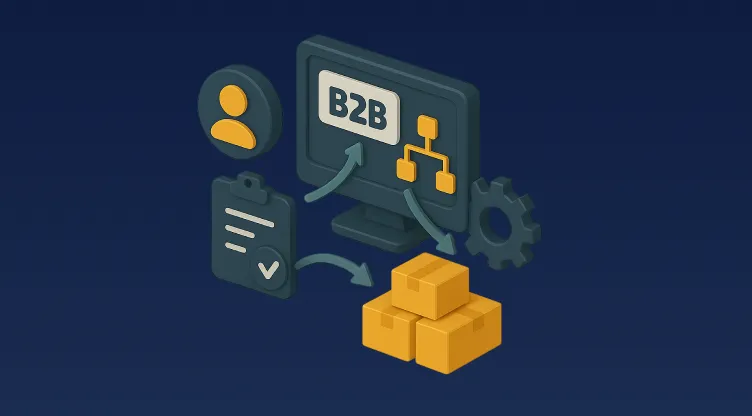Challenges & Strategies to Reduce Inventory Costs

Table of Contents
Is it tough for your firm to control inventory costs? You are not by yourself. Overstocking and stockouts can make managing inventory costs appear to be an ongoing battle. But what if we told you there is a method to change the tide? In our previous article, we covered the mechanics of calculating inventory costs and the various types of inventory costs.
Now we're getting into the true game-changer: Strategies to reduce inventory costs and master inventory cost management. Whether you're drowning in surplus stock or losing sales due to shortages, this article will provide you with effective strategies for optimizing your inventory, lowering costs, and increasing your bottom line. Ready to turn your inventory difficulties into wins? Let's get started!
Factors Affecting Inventory Costs
Lead Times and Demand Variability
The tradeoff between lead time and demand variability is among the most meaningful factors in inventory cost. Extended lead times can result in companies stockpiling unnecessarily, leading to further price management problems in inventory cost. In the meantime, getting too much or too little could cause overproduction or stock depletion, both of which contribute to low revenue. By understanding these dynamics, companies can change their strategy to reduce inventory holding costs while maintaining service levels to match demand.
Warehouse Space and Storage Expenses
It is a key factor in the determination of inventory cost since each square foot of warehouse space has a consultation fee. Storage overestimation (excessive) may cause waste, and storage underestimation may cause overcrowding of facilities and poor operations. Intelligent inventory cost control refers to not only the ultimate optimization of warehouse layout and the rational utilization of vertical space but also the use of third-party logistics to limit storage costs.
Product Shelf Life and Seasonality
Perishable and seasonal merchandise poses unique issues for inventory cost management. Short shelf-life products can lead to extensive product spoilage and obsolescence, which is even more destructive to profits and inventory cost setting. Seasonal items should be appropriately planned to prevent overstock conditions after the peak season, which might seriously unravel with markdowns and diminished profits.
Reliability of Suppliers and Economic Conditions
Influences from outside your business, including the reliability of your suppliers and the state of the economy, have a direct impact on your inventory costs. Inconsistent suppliers result in supply chain disruptions, forcing you to carry higher safety stock levels and thereby drive inventory levels higher. Economic downturns can change patterns of demand, while inflation inflates raw material and finished goods costs, making the accurate calculation of inventory costs even more critical.
Addressing these key inventory cost factors can help businesses use meaningful strategies to reduce inventory costs, which we’ll discuss in this blog. These strategies can lead to smarter inventory cost management and long-term financial health.
Common Challenges in Managing Inventory Cost
Overstocking and Understocking Issues
Accurately balancing too much inventory vs. not enough inventory is an ongoing challenge in inventory cost management. Overstocking ties up useful capital leads to higher storage costs, and creates a potential for obsolescence. On the other hand, a lack of stocked quantities can result in lost sales, a production backlog, and unhappy customers. Accurate stock cost calculation is the key to preventing over- and under-stocking and keeping the stock at an optimal level.
Inaccurate Demand Forecasting
Effective inventory cost management hinges on accurate demand forecasting. You cannot realistically manage your inventory if you can't foresee what customers will buy. Unreliable predictions result in either overstocking or understocking, which directly translates into a loss of inventory cost. Investing in solid forecasting tools and methods is essential to mitigate such risks.
High Carrying Costs Due to Inefficiencies
Carrying costs—the costs of warehousing and inventory management—are a stealth tax. Wasteful warehouse operations, lost space, and old systems can drive these costs up dramatically. When inventory cost management is ignored, companies have unnecessary expenses on insurance, labor and depreciation. The fight against inefficiency should not be ignored for the sake of effective strategies to cut inventory costs and so on.
Strategies to Reduce Inventory Costs
We’ve gone through factors that affect inventory costs and common challenges you might face in managing inventory costs, but how do we tackle the challenges and minimize the effects of factors on inventory costs? Let us take a look at the strategies to reduce inventory costs.
Improve demand forecasting.
As we've seen, accurate demand forecasting is essential for effective inventory cost management. Businesses that use historical data, industry patterns, and advanced analytics can dramatically increase their ability to predict future demand. This results in more optimised inventory levels, minimizing both the danger of overstocking and the possibility of stockouts, and so saving inventory costs.
Adopt Just-In-Time (JIT) Inventory Practices
Just-In-Time (JIT) inventory is a policy to reduce inventory costs by receiving materials and manufacturing products only when requested. This method depends on close working relationships with suppliers and lean process operation, yet the fulfillment of the potential for lowering storage costs and minimizing waste is high. Promising strategies to reduce inventory costs, in some cases, require at least portions of JIT.
Utilize inventory management software.
Modern inventory cost management relies primarily on technology. Inventory management software automates many of the operations connected with stock level tracking, demand forecasting, and order quantity optimization. These solutions enable real-time inventory visibility, allowing businesses to make data-driven decisions while also lowering inventory costs.
Optimize Order Quantity with EOQ
The economic order quantity (EOQ) equation is one of the most crucial functions for calculating inventory cost and determining the optimal order quantity (i.e., the quantity that minimizes the general cost of inventory). Using ordering cost, carrying cost, and demand variability as input, EOQ provides businesses with the sweet spot, which maximizes the benefits of holding inventory and minimizes the harms of ordering.
Conduct Regular Inventory Audits
It helps keep accurate records and points out deviations from normal stock. The audit will also identify problems resulting from shrinkage damage or obsolescence. Once identified, these problems can adversely affect inventory costs. If detected beforehand, this will minimize losses and continue ensuring better organizational effectiveness, which helps manage inventory costs.
Teach Staff About Inventory Control Techniques
A trained staff is the foundation of efficient inventory management. Purchasing, warehousing, and inventory control staff need to understand the need for accurate record-keeping, process, and cost efficiency, and other relevant factors. Regular training sessions prepare employees to ensure that everyone works towards reducing inventory costs.
Foster Strong Connections With Trustworthy Vendors
In order to have control over the costs of inventory, it is important to have smooth relations with one or more trusted suppliers. Vendors ensure consistent quality in the goods supplied to the retailer, as well as promptness in delivery. This allows the retailer to improve inventory flow while also ensuring minimal disruption, thus contributing to reduced inventory costs.
Final Thoughts
The phases of mastering inventory cost management involve knowing the types of inventory costs and devising strategies to reduce them from the very beginning. Ultimately, the magic wand is using technology to smooth operations. Omniful's Inventory Management System provides the secret to calculating inventory costs perfectly and practically effortlessly. Use Omniful to make inventory decisions aided by real-time data analytic support, automate your inventory processes, and continually optimize stock levels.
That means no more overstocking and understocking headaches or forecasting and no more awkwardness in tracking! Omniful enables you to be lean on inventory, fat on profits, and help keep your business ahead of the curve; do not let inventory costs slow you down; instead, let Omniful push you ahead of the company; start using it today, so you won't miss the chance of inventory potentials knocking at your door! Request a demo today!
FAQs
Can technology really help with inventory cost management?
Absolutely! Tools like Omniful’s Inventory management software automate tracking, provide real-time insights and streamline processes. We are like having a superhero for your inventory cost management—efficient, reliable, and always on your side!
How does poor inventory cost management impact my business?
Oof, it’s a domino effect! Overstocking ties up your capital, understocking loses sales, and inefficiencies spike carrying costs. Poor inventory cost management can drain profits faster than you can imagine!
What strategies can reduce inventory costs effectively?
Short and sweet: Improve demand forecasting, adopt Just-In-Time (JIT) practices, use inventory management software, optimize order quantities with EOQ, and conduct regular audits. Boom—strategies to reduce inventory costs made simple!























